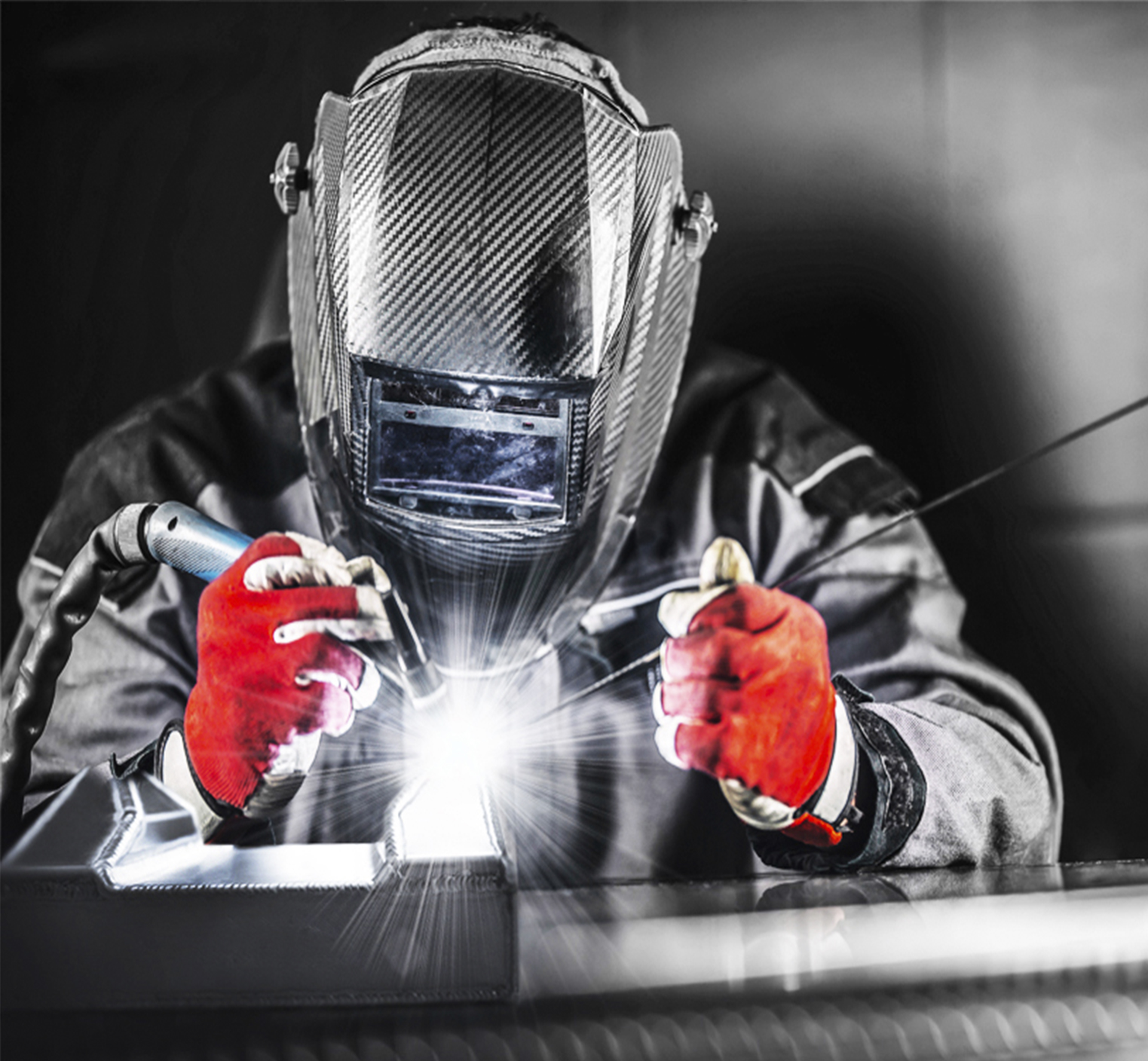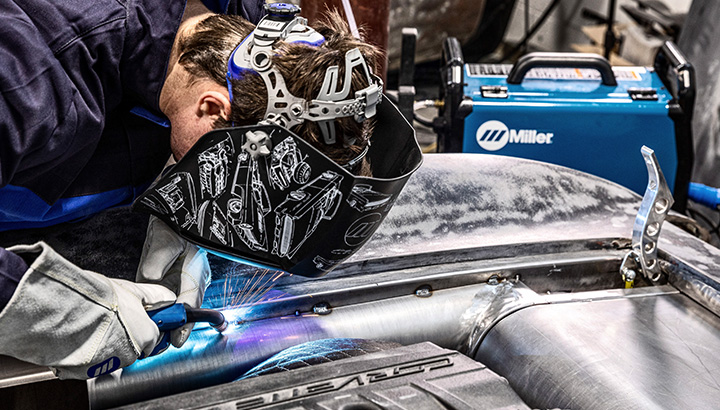Typical Welding Repair Service Issues and Exactly How to Address Them Effectively
Welding fixings often encounter a variety of concerns that can jeopardize the honesty of the final item. Common troubles consist of insufficient infiltration, porosity, and misalignment, to name a few. Each issue offers distinct obstacles that call for particular approaches for resolution. Recognizing these problems is vital for welders intending to enhance their skills and end results. This conversation will certainly explore these usual welding repair concerns and efficient techniques to resolve them.
Poor Infiltration
Insufficient penetration happens when the weld metal stops working to totally fuse with the base material, resulting in weak joints and possible structural failings. This problem typically stems from inadequate heat input, incorrect electrode angle, or incorrect welding rate. Welders may experience insufficient penetration due to a mistake of the required criteria for a details product thickness or type. In addition, contamination on the base material's surface can prevent reliable bonding, aggravating the issue. To address poor penetration, welders must assure proper settings on their equipment and preserve a tidy job surface area. Regular evaluation of welds is recommended to determine any kind of shortages early, permitting for timely corrections and the prevention of jeopardized structural integrity in welded settings up.
Porosity
Porosity is a common flaw in welded joints that materializes as little gas bubbles caught within the weld steel. This issue can endanger the integrity of the weld, causing lowered stamina and prospective failing under anxiety. Montana Mobile Welding and Repair Welding. Porosity normally develops from contamination, dampness, or inappropriate welding methods, which enable gases to escape into the molten weld swimming pool. To attend to porosity, welders need to guarantee correct surface area preparation, preserve a tidy workplace, and use suitable welding criteria. Furthermore, selecting the best filler product and shielding gas can minimize gas entrapment. Routine evaluation and screening of welds can help identify porosity early, assuring prompt rehabilitative actions are taken, consequently maintaining the top quality and reliability of the bonded framework
Imbalance
Misalignment in welding can develop from various variables, consisting of inappropriate arrangement and thermal growth. Comprehending the origin triggers is necessary for effective resolution. Several modification strategies are available to straighten parts and assure architectural honesty.
Reasons for Misalignment
Welding misalignment often comes from a selection of underlying issues that can jeopardize structural honesty. One primary reason is inappropriate fit-up of elements before welding, which can bring about gaps and irregular surfaces. Variations in thermal development throughout the welding process can additionally cause distortion, especially if the products being joined have various coefficients of expansion. In addition, insufficient fixturing and clamping might fail to hold elements firmly in area, leading to motion throughout welding. Poorly maintained equipment, including welding devices and devices, may introduce disparities in the weld bead, additional adding to misalignment. Finally, operator error, stemming from inadequate training or experience, can likewise play a significant function in creating misaligned welds.
Correction Methods Available
Resolving imbalance efficiently needs a mix of corrective techniques customized to the details concerns at hand. One typical approach is making use of jigs or fixtures to hold components in the right position throughout welding, making sure consistent alignment. Additionally, pre-heating the materials can help lower distortion and enhance fit-up. For considerable imbalance, mechanical realignment strategies, such as utilizing hydraulic jacks or clamps, can be used to deal with the placement prior to welding. Post-weld heat therapy might likewise be required to alleviate stress and anxieties brought on by imbalance. Careful evaluation and adjustment throughout the arrangement phase can stop misalignment problems from coming to be significant troubles, advertising a smoother welding process and improving general architectural stability.
Distortion
Distortion is a common challenge in welding that can emerge from different aspects, consisting of uneven heating & cooling. Recognizing the root causes of distortion is essential for implementing efficient avoidance techniques. Addressing this concern not just boosts structural stability however likewise boosts the overall quality of the weld.
Reasons of Distortion
When subjected to the extreme warm of welding, materials usually go through changes that can result in distortion. This sensation primarily emerges from thermal expansion and contraction during the welding process. As the weld area warms up, the material expands; upon cooling, it acquires, which can develop interior tensions. On top of that, irregular heating throughout a work surface can exacerbate these anxieties, resulting in bending or bending. The kind of material likewise plays a substantial role; steels with varying thermal conductivity and coefficients of growth may respond differently, leading to uncertain distortions. In addition, inadequate joint layout and insufficient fixturing can add to imbalance during welding, increasing the likelihood of distortion. Understanding these causes is important for reliable welding repair work and prevention methods.
Prevention Techniques
Reliable prevention methods for distortion during welding concentrate on regulating warm input and making sure proper joint design. Maintaining a regular warmth input helps to lessen thermal growth and contraction, which can result in distortion. Making use of techniques such as preheating the work surface can also decrease the temperature gradient, advertising uniform heating. Furthermore, choosing ideal joint styles, such as T-joints or lap joints, can boost stability and minimize tension focus. Implementing correct fixturing to safeguard the workpieces in place better help in maintaining alignment throughout the welding process. Finally, staggered welding sequences can disperse heat extra evenly, protecting against local distortion. By using these methods, welders can significantly lower the chance of distortion and improve the total top quality of their welds.
Splitting
Breaking is an usual concern encountered in welding repairs, frequently arising from numerous factors such as improper air conditioning rates, material selection, or insufficient joint preparation. The incident of cracks can substantially endanger the stability of the weld, leading to potential failings throughout operation. To address this issue, welders must mini mig welder initially evaluate the root triggers, ensuring that products work and suitably selected for the certain application. In addition, regulating the cooling rate during the welding procedure is crucial; quick cooling can induce anxiety and result in splitting. Appropriate joint style and preparation also add to lessening the threat. Executing these approaches can boost weld high quality and sturdiness, eventually decreasing the probability of splitting in completed weldments.

Insufficient Fusion
A considerable issue in welding fixings is insufficient fusion, which occurs when the weld steel does not appropriately bond with the base product or previous weld passes - Montana Mobile Welding and Repair Belgrade. This flaw can result in weaknesses in the joint, potentially jeopardizing the stability of the welded structure. Factors contributing to incomplete fusion consist of not enough warm input, improper welding method, and contamination of the surfaces being joined. To resolve this have a peek at this website concern effectively, welders should guarantee appropriate pre-weld cleansing and surface area prep work, along with adjust their welding criteria to achieve sufficient infiltration and blend. Normal inspection throughout the welding procedure can likewise assist recognize insufficient blend early, permitting timely restorative actions to boost the overall high quality of the weld
Overheating
While welding repair work can enhance structural integrity, overheating provides a significant challenge that can cause material destruction. Excessive warmth during welding can modify the mechanical properties of metals, causing minimized strength, increased brittleness, and bending. This sensation is particularly essential in high-stress applications where architectural reliability is vital. Determining overheating can involve visual inspections for discoloration or distortion, as well as keeping an eye on temperature level during the welding procedure. To minimize the threats linked with overheating, welders ought to use ideal strategies, such as regulating warm input, changing traveling rate, and utilizing appropriate filler materials. Additionally, implementing pre- and post-weld heat treatments can help restore product residential or commercial properties and boost the general high quality of the repair service, ensuring lasting performance and safety and security.
Frequently Asked Inquiries
What Are the Usual Indicators of a Welding Defect?

Exactly How Can I Evaluate My Welds for Quality?
To examine welds for top quality, one can use visual inspections, ultrasonic screening, and radiographic techniques. Each method guarantees architectural integrity, identifies flaws, and verifies adherence to specified requirements, eventually boosting the integrity of the bonded joints.
What Security Preventative Measures Should I Take While Welding?
When welding, one should prioritize security by using suitable individual safety devices, ensuring appropriate this link ventilation, protecting flammable products away, maintaining a tidy work space, and recognizing surroundings to avoid injuries and accidents.
Can I Fix a Weld Without Redesigning the Entire Joint?
Fixing a weld without redesigning the whole joint is feasible, depending upon the damage (Montana Mobile Welding and Repair Belgrade). Techniques such as grinding, including filler material, or making use of a welding procedure can efficiently resolve particular flaws while preserving the surrounding structure
What Tools Are Crucial for Reliable Welding Repair Works?
Vital devices for efficient welding fixings include a welding machine, cord brush, mill, protective gear, clamps, and filler products. Each device plays an essential duty in guaranteeing quality and safety and security during the repair process. Porosity normally emerges from contamination, dampness, or inappropriate welding techniques, which allow gases to escape right into the molten weld swimming pool. Improperly maintained tools, including welding makers and tools, may present disparities in the weld grain, more contributing to misalignment. When subjected to the intense warm of welding, materials frequently go through modifications that can lead to distortion. Cracking is a common concern experienced in welding fixings, typically resulting from numerous aspects such as improper air conditioning rates, product choice, or poor joint prep work. A substantial problem in welding fixings is incomplete fusion, which occurs when the weld metal does not adequately bond with the base product or previous weld passes.
Comments on “A guide to perfect fusion with Montana Mobile Welding and Repair Belgrade Fabrication”